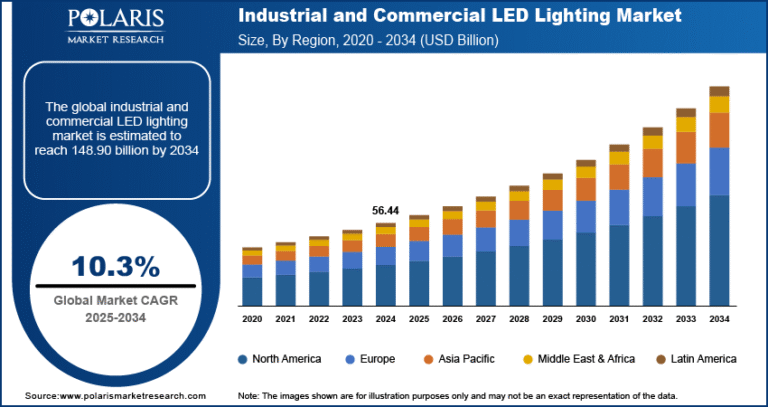Electric Power Distribution Automation Systems Market Size Projected to Reach USD 56.50 Billion by 2034 | CAGR of 7.4%

The global electric power distribution automation systems market size was valued at USD 27.81 billion in 2024. The market is expected to grow from USD 29.82 billion in 2025 to USD 56.50 billion by 2034, exhibiting a CAGR of 7.4% from 2025 to 2034.
Key Market Trends & Insights :
-
-
Strong Market Growth Across Regions
The market is experiencing consistent growth, projected to expand steadily over the next decade. North America leads in adoption due to mature infrastructure and smart grid investments, while Asia-Pacific shows the fastest growth driven by rapid urbanization, electrification, and government support. -
Substation and Feeder Automation Lead the Way
Substation automation accounts for the largest market share as utilities focus on improving reliability and real-time control. Feeder automation is also gaining momentum, particularly for integrating distributed energy sources and enabling faster fault detection. -
Integration of Digital Technologies
The deployment of IoT sensors, artificial intelligence, and cloud-based platforms is transforming traditional power distribution. These technologies enable predictive maintenance, real-time monitoring, automated outage management, and self-healing grids. -
Rising Cybersecurity and Interoperability Challenges
With increasing digitalization, the risk of cyberattacks on critical infrastructure is growing. Utilities face challenges in securing data and ensuring interoperability among diverse systems and legacy equipment. -
Surge in Investment and Infrastructure Modernization
Governments and utility companies are heavily investing in grid modernization efforts, including the rollout of smart meters, SCADA systems, and energy storage solutions. These investments aim to meet growing energy demands from electric vehicles, renewable energy, and industrial expansion.
-
Market Overview:
The electric power distribution automation systems market is undergoing a transformative shift as utility providers embrace smart infrastructure solutions to improve reliability, reduce operational costs, and optimize energy delivery. The market benefits from growing investments in energy infrastructure upgrades and a rise in government initiatives supporting smart grid deployment. The integration of advanced technologies such as AI, IoT, and machine learning into distribution automation further accelerates innovation in the sector.
Market Size & Forecast
Market size value in 2025 – USD 29.82 billion
Revenue forecast in 2034 – USD 56.50 billio
CAGR – 7.4% from 2025 – 2034
Request for Free Sample:
https://www.polarismarketresearch.com/industry-analysis/electric-power-distribution-automation-systems-market/request-for-sample
Key Market Growth Drivers:
-
Modernization of aging power infrastructure: Utilities are increasingly upgrading outdated electrical networks to improve performance and reduce power outages.
-
Increased demand for real-time monitoring and control: The need for efficient energy use and system reliability pushes the adoption of automated distribution technologies.
-
Government regulations and funding: Several countries have implemented policies and funding schemes that promote smart grid technologies.
-
Integration of renewable energy sources: Distribution automation is critical to managing the variable output from renewable energy sources like wind and solar.
-
Advancements in communication technologies: The deployment of 5G, edge computing, and advanced metering infrastructure is streamlining operations and increasing system responsiveness.
Market Challenges:
Despite robust growth prospects, the Electric Power Distribution Automation Systems market faces key challenges such as high initial investment costs, integration complexity with existing infrastructure, and cybersecurity vulnerabilities associated with digital grid systems. Moreover, limited skilled labor to manage and operate automated systems in developing economies can hinder implementation speed. Regulatory uncertainty in some regions may also delay modernization efforts, affecting market expansion.
Post Tags:
#ElectricPowerAutomation #SmartGridSolutions #UtilityTechnology #GridModernization #PowerDistribution #AutomationSystems #EnergyManagement #SelfServiceTech #ElectricGridUpgrade #SmartEnergyFuture




